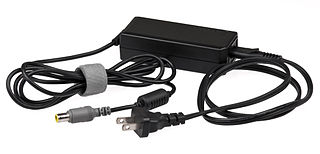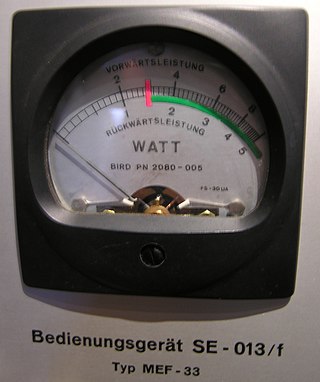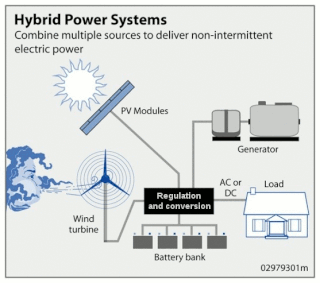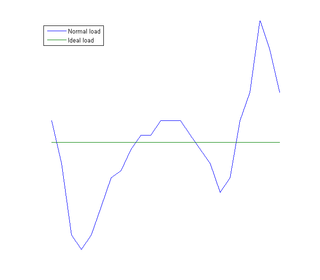Determining standby power
Identifying devices
The following types of devices consume standby power.
- Transformers for voltage conversion.
- Wall wart power supplies powering devices that are switched off.
- Many devices with "instant-on" functions that respond immediately to user action without warm-up delay.
- Commonly used LED strips and such low power household lights.
- Electronic and electrical devices in standby mode that can be woken by a remote control, e.g. some air conditioners, audio-visual equipment such as a television receiver
- Electronic and electrical devices that can carry out some functions even when switched off, e.g. with an electrically powered timer. Most modern computers consume standby power, allowing them to be woken remotely (by Wake on LAN, etc.) or at a specified time. These functions are always enabled even if not needed; power can be saved by disconnecting from mains (sometimes by a switch on the back), but only if functionality is not needed.
- Uninterruptible power supplies (UPS)
Other devices consume standby power which is required for normal functioning that cannot be saved by switching off when not in use. For these devices electricity can only be saved by choosing units with minimal permanent power consumption:
- Cordless telephones and answering machines
- Timers that operate devices
- Security systems and fire alarms
- Transformer-powered doorbells
- Programmable thermostats
- Motion sensors, light sensors, built-in timers and automatic sprinklers
Estimating standby power
Standby power consumption can be estimated using tables of standby power used by typical devices, [18] although standby power used by appliances of the same class vary extremely widely (for a CRT computer display standby power is listed at a minimum of 1.6 W, maximum 74.5 W). Total standby power can be estimated by measuring total house power with all devices standing by, then disconnected, [18] [19] but this method is inaccurate and subject to large errors and uncertainties. [8]
Measuring standby power
The power wasted in standby must go somewhere; it is dissipated as heat. The temperature, or simply perceived warmth, of a device on standby long enough to reach a stable temperature gives some idea of power wasted.
For most home applications, wattmeters give a good indication of energy used, and some indication of standby consumption.
A wattmeter is used to measure electrical power. Inexpensive plugin wattmeters, sometimes described as energy monitors, are available from prices of around US$10. Some more expensive models for home use have remote display units. In the US wattmeters can often also be borrowed from local power authorities [20] or a local public library. [21] [22] Although accuracy of measurement of low AC current and quantities derived from it, such as power, is often poor, these devices are nevertheless indicative of standby power, [23] if sensitive enough to register it. Some home power monitors simply specify an error figure such as 0.2%, without specifying the parameter subject to this error (e.g., voltage, easy to measure), and without qualification. [24] Errors of measurement at the low standby powers used from about 2010 (i.e., less than a few watts) may be a very large percentage of the actual value—accuracy is poor. [23] Modification of such meters to read standby power has been described and discussed in detail (with oscilloscope waveforms and measurements). [25] Essentially, the meter's shunt resistor, used to generate a voltage proportional to load current, is replaced by one of value typically 100 times larger, with protective diodes. Readings of the modified meter have to be multiplied by the resistance factor (e.g. 100), and maximum measurable power is reduced by the same factor.
Professional equipment capable of (but not specifically designed for) low-power measurements clarifies typically that the error is a percentage of full-scale value, or a percentage of reading plus a fixed amount, and valid only within certain limits.
In practice, accuracy of measurements by meters with poor performance at low power levels can be improved by measuring the power drawn by a fixed load such as an incandescent light bulb, adding the standby device, and calculating the difference in power consumption. [23]
Less expensive wattmeters may be subject to significant inaccuracy at low current (power). They are often subject to other errors due to their mode of operation:
- If the load is highly reactive, the power shown by some meters may be inaccurate. Meters capable of displaying power factor do not have this problem.
- Many AC meters are designed to give readings that are only meaningful for the sinusoidal waveforms of normal ac power. Waveforms for switched-mode power supplies as used in much electronic equipment may be very far from sinusoidal, causing power readings of such meters to be meaningless. Meters specified to read "RMS power" do not have this problem.
Laboratory-grade equipment designed for low power measurement, which costs from several hundreds of US dollars and is much larger than simple domestic meters, can measure power down to very low values without any of these effects. The US IEC 62301 recommendation for measurements of active power is that power of 0.5 W or greater shall be made with an uncertainty of 2%. Measurements of less than 0.5 W shall be made with an uncertainty of 0.01 W. The power measurement instrument shall have a resolution of 0.01 W or better. [8] [26]
Even with laboratory-grade equipment measurement of standby power has its problems. There are two basic ways of connecting equipment to measure power; one measures the correct voltage, but the current is wrong; the error is negligibly small for relatively high currents, but becomes large for the small currents typical of standby—in a typical case a standby power of 100 mW would be overestimated by over 50%. The other connection gives a small error in the voltage but accurate current, and reduces the error at low power by a factor of 5000. A laboratory meter intended for measurement of higher powers may be susceptible to this error. [27] Another issue is the possibility of measuring equipment damage if in a very sensitive range capable of measuring a few milliamps; if the device being measured comes out of standby and draws several amps, the meter can be damaged unless it is protected. [27]
- Standby Indicator
- DC Power adaptor













